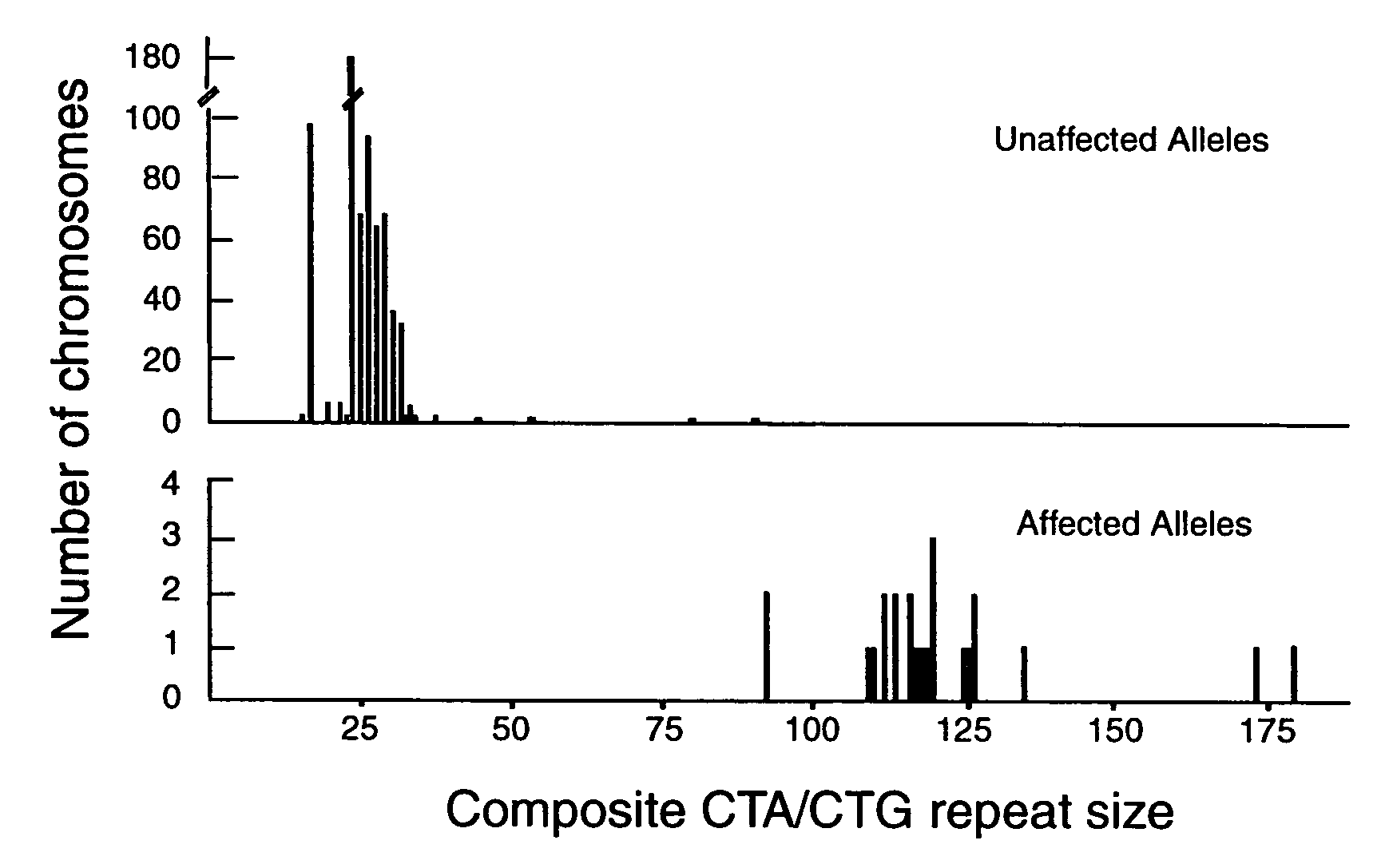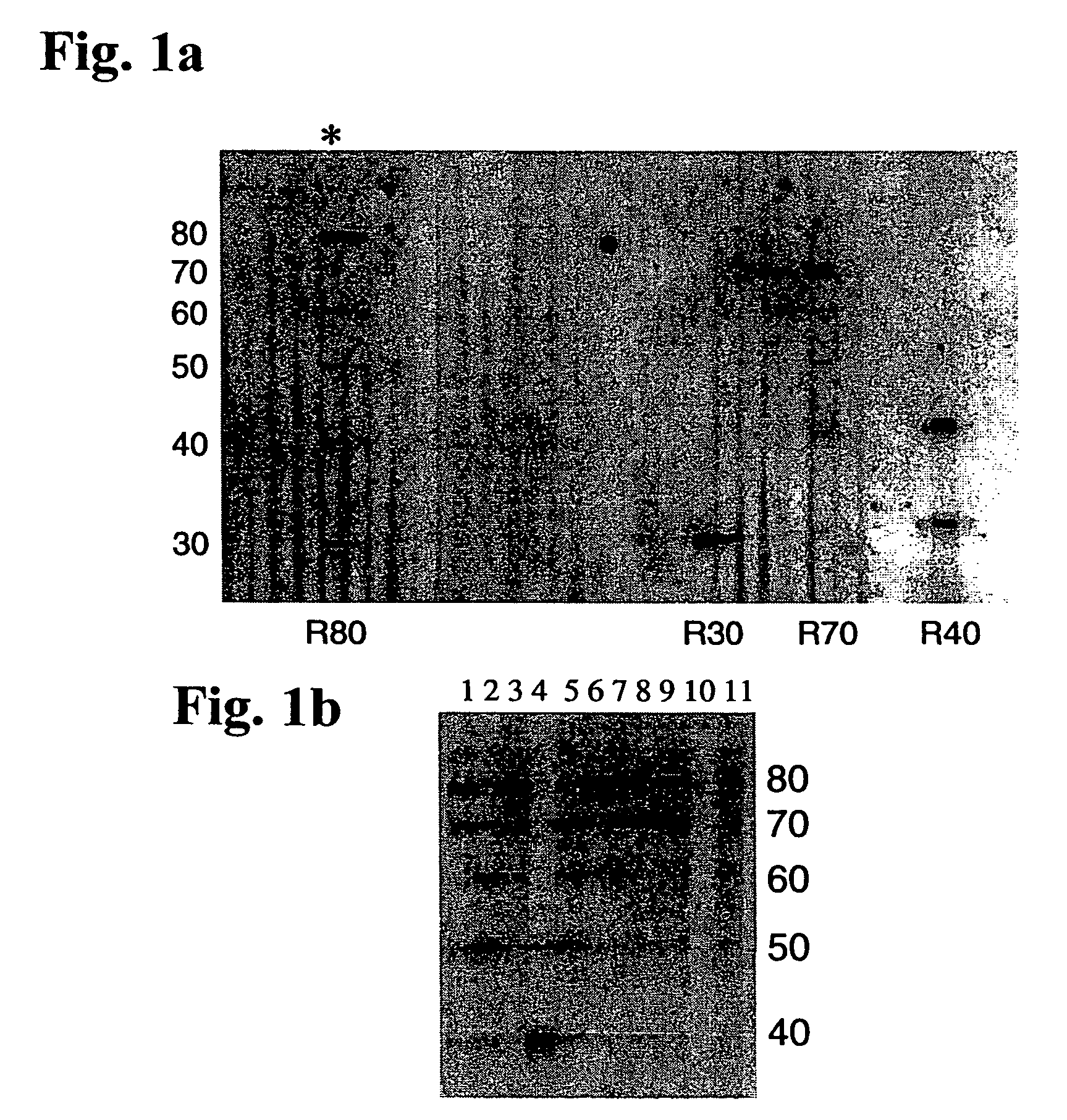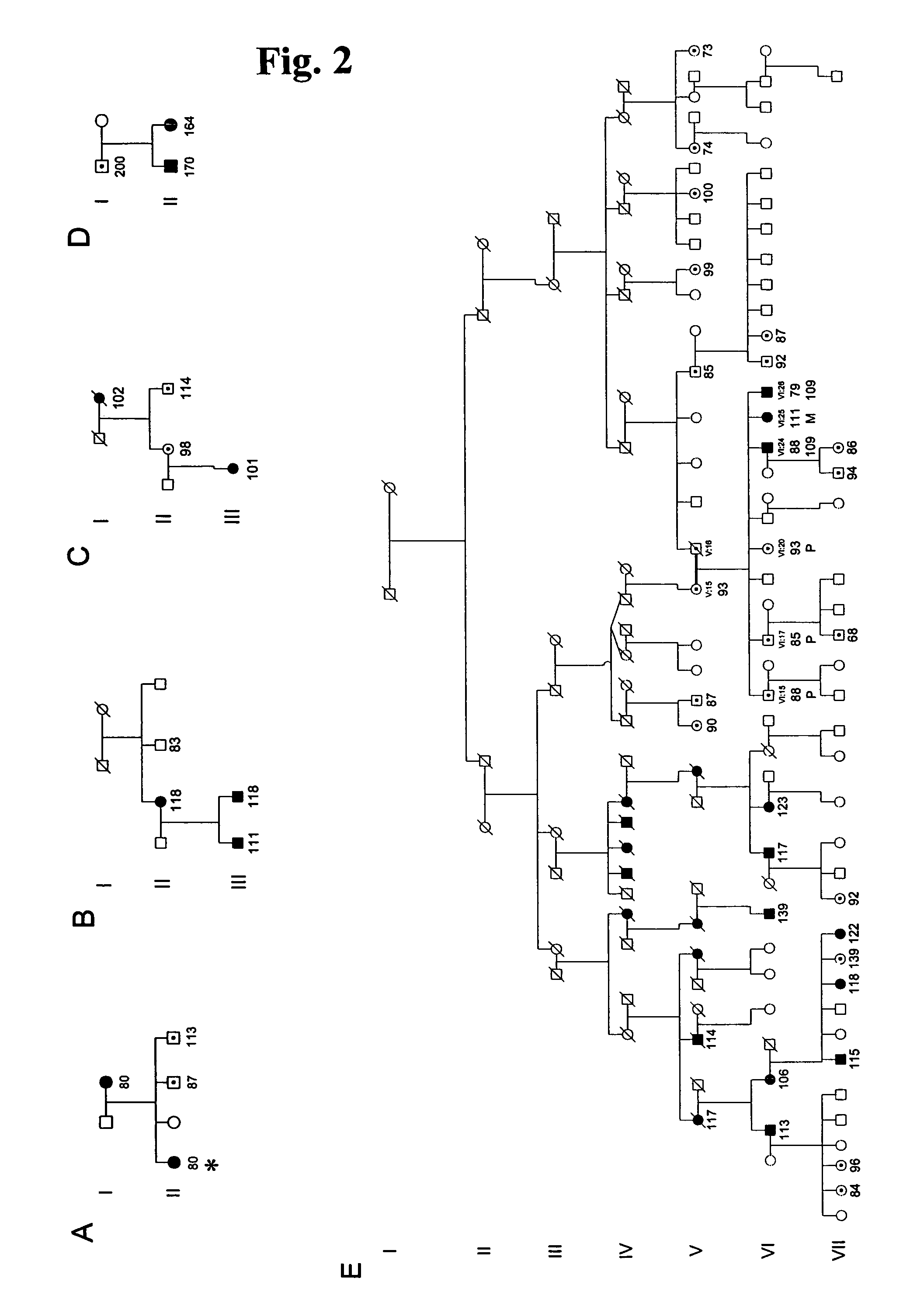Spinocerebellar ataxia type 8 and methods of detection
a technology of spinocerebellar ataxia and detection methods, applied in the field of spinocerebellar ataxia type 8 and detection methods, can solve the problems of myotonic dystrophy, decrease in expression of corresponding protein products, etc., and achieve the effect of mild aspiration and diminished vibration perception
- Summary
- Abstract
- Description
- Claims
- Application Information
AI Technical Summary
Benefits of technology
Problems solved by technology
Method used
Image
Examples
Embodiment Construction
A. Methods of Diagnosis
[0037]The identification of a coding sequence that is associated with a disease allows for improved diagnosis of the disease. Thus, the present invention relates to methods of diagnosing individuals at-risk of developing spinocerebellar ataxia type 8 as well as those individuals displaying symptoms of the disease. Another aspect of the invention relates to methods of diagnosing individuals not at-risk. In general, the methods can detect the presence of a DNA fragment in genomic DNA or cDNA. Preferably the DNA fragment comprises nucleotides present in genomic DNA. Preferably, the DNA fragment is located within an SCA8 locus of the long arm of chromosome 13. The SCA8 locus can contain an at-risk SCA8 allele or a normal SCA8 allele. The SCA8 locus typically contains a repeat region.
[0038]Typically the number of CTG repeats present in the repeat region of an SCA8 allele can be determined. Generally, an at-risk allele of SCA8 is an allele with at least about 80 CTG...
PUM
| Property | Measurement | Unit |
|---|---|---|
| temperature | aaaaa | aaaaa |
| pH | aaaaa | aaaaa |
| pH | aaaaa | aaaaa |
Abstract
Description
Claims
Application Information
 Login to View More
Login to View More - R&D
- Intellectual Property
- Life Sciences
- Materials
- Tech Scout
- Unparalleled Data Quality
- Higher Quality Content
- 60% Fewer Hallucinations
Browse by: Latest US Patents, China's latest patents, Technical Efficacy Thesaurus, Application Domain, Technology Topic, Popular Technical Reports.
© 2025 PatSnap. All rights reserved.Legal|Privacy policy|Modern Slavery Act Transparency Statement|Sitemap|About US| Contact US: help@patsnap.com



